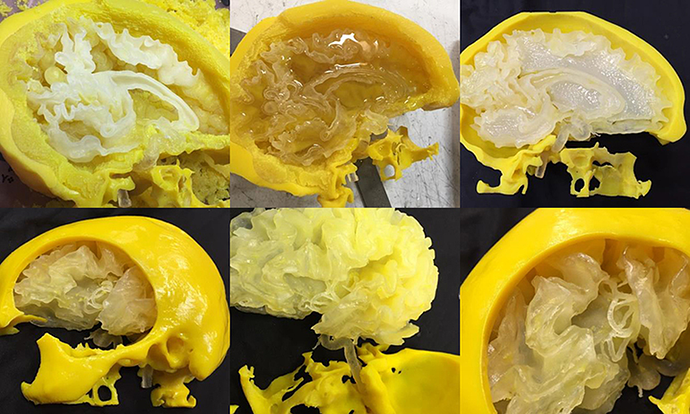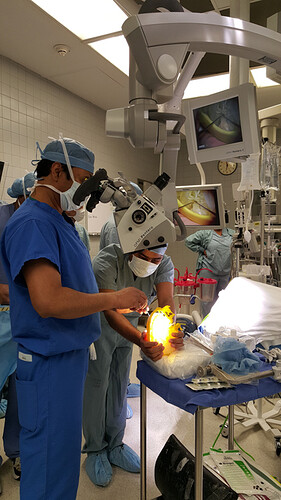Stratasys, a manufacturing technology company based in Valencia, California, is touting the use of 3D printed brains it helped to create as a tool for planning neuro surgeries. Dr. Saleem Abdulrauf, chairman of the St. Louis University Department of Neurological Surgery and Neurosurgeon-in-Chief at the St. Louis University Hospital, and his team are currently assessing the usefulness of 3D printed models versus more standard tools and techniques for readying approaches to treat aneurysms in the brain.
3d-printed-brain-model-004They partnered with the university’s engineering department and Stratasys to create one-to-one replicas of actual patient brains based on tomography scans performed earlier. The areas of the aneurysms were of particular concern and personal attention was given by the engineering team to copy them as precisely as possible. The models were then placed into model skulls and filled a special gelatinous substance to make them feel more real.
The study using the model brains is still ongoing, so no final results are yet available. Yet, Dr. Abdulrauf said that, “I”ve done a lot of aneurysm operations in my career and I can confidently say that having the 3D printed model here has a very positive impact on the procedure results. The model has helped to identify and overcome surgical challenges, like optimum access to the aneurysm or the depth and angle of the approach, before surgery begins.”
More from Stratasys:
Dr. Abdulrauf has proposed a two arm study with resident neurosurgeons. All of the residents will be asked to perform a procedure on a cadaver. Half of the residents will receive a 3D printed model of the cadaver’s brain prior to surgery while the other half will prepare for the surgery without a 3D model. The two groups will then be compared. The assessors will be blind to which group received the 3D printed model. The success of one group over the other will be measured by time undertaken during the process, absence of errors, and the ability of the groups to keep the circumference of the surgery as minimally invasive into healthy tissue as possible. From this study, Dr. Abdulrauf hopes to quantify the use of 3D printed models in pre-surgical planning.
A second study will involve measuring the outcomes of patients who receive the traditional gold standard of care during surgery and patients who receive the gold standard plus their neurosurgeons receive a 3D printed model of their brain to practice on prior to surgery. The recovery time of patients and overall patient comfort post-surgery will be carefully monitored in both groups. By studying actual patient outcomes, Dr. Abdulrauf will gain measureable insight into the benefits of 3D printing for surgical procedures.

